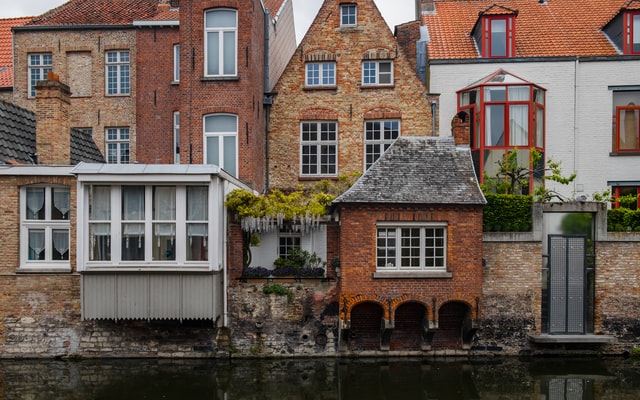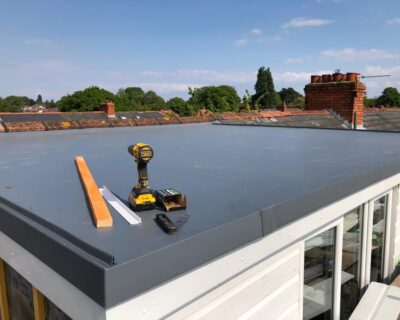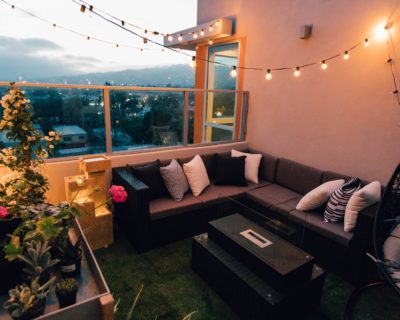Blog & News

Flat roof vs pitched roof
Keeping a roof over your head is the archetypal synonym for the security of your house – or any other building in which you spend the time of your life. You want the roof to be right, whether you’re building a house from scratch, adding on an extension or a garage.
Being right as far as a roof is concerned means four main things:
- Being weatherproof
- Being waterproof
- Being aesthetically pleasing for the style of building, and
- Being affordable
When it comes to roofing, you have one big choice to make before you get into much else. Do you want a flat roof, or do you want a pitched roof? There are advantages – and disadvantages to each.
Let’s take a look at the options.
Flat roof
Before we go much further, let’s clear up a misunderstanding. Flat roofsare not entirely flat. If they were, then rainwater or snow would simply sit on top of them till either the sun or wind dispersed it, or the roof gave way under the weight.
There’s got to be a slight pitch even to the flattest of ‘flat roofs’ so that water can run off it. So if you were thinking you shouldn’t get a flat roof because of the rainwater problem – relax, there is no rainwater problem.
So, let’s see why you might want a flat roof.
- Not every property has to look like an architectural masterpiece. Flat roofs have traditionally been seen as more ‘functional’ than aesthetic. This can be perfectly fine – not every garage, extension, or even home needs the look of a holiday cottage.
- Flat roofs are generally cheaper to put up and maintain than pitched ones. There’s usually significantly less construction time involved, the materials are often simpler, and the labour costs are reduced by the same factor as the time of construction.
- The pleasure with a flat roof is that you can easily put a lantern skylight into the relatively flat surface, and transform the room from a dark space to a bright, brilliant interior. You can do the same with a pitched roof, but the angles tend to limit the effect, as well as being slightly more expensive and complicated.
OK. Are there any reasons you might not want to get a flat roof?
- Historically, they’ve had shorter lifespans than pitched roofs, and needed more ongoing maintenance. While there’s no denying this has been the case, recent developments have rather tackled it head on. Materials like EPDM, hot rubber and 3-layer high-performance elastomeric felt systems, bonded with hot bitumen, means your flat roof can now last you over four decades if it’s professionally applied. It’s worth noting though that there is a weight consideration in all this. Ideally, you’d only lay an asphalt roof with a membrane on a concrete base or on a seriously strong and probably purpose-built timber frame. So check the sturdiness of the house or extension you’re proposing to add the flat roof to before you begin.
- If you’re designing your dream house, and you’re thinking of hanging out in your loft conversion, a flat roof is just not going to do the trick for you.
Price of a flat roof?
We’ve said a flat roof can often be cheaper than a pitched one. What are we talking about here?
Well, naturally, the actual costs will depend on several factors, including the size of the roof, the expertise of the roofer, and external elements like the rate of inflation and the region you’re in. But as a general guide, you should expect to pay:
- Felt – £50-70 m2 (square metre)
- EPDM – £80-100 m2
- Fibreglass – £90-120 m2
As we say, don’t be alarmed and horrified if you get quoted prices slightly higher than this – no-one’s trying to con you, but there are variation-factors. This is just a ball-park figure to work with.
Pitched roof
So that’s flat roofs. What about the pitched option? First of all, yes, a pitched roof is exactly what you think it is – the roof made of at least two sloping sides that meet to form a peak.
They’re popular in lots of parts of the world, but what are the advantages of going for a pitched roof in your modern home or extension?
- Well, it’s undeniable that the pitched roof is a design classic. Ask any six-year-old in the western world to draw a house, you can be sure they’ll draw one with a pitched roof. What that means is if you go for a pitched roof, you’ll have a style that fits in most anywhere.
- If you’re looking to maximise the space in your house with a loft conversion, the ‘witch’s hat’ of a pitched roof gives you a lot more space to play with. In fact, it’s the only really viable way to make a loft conversion practical and economical.
- While we’ve dispersed the myth of the ‘flat roof,’ there is no getting away from the fact that the water and snow resistance of a pitched roof will be better than on a flat roof, thanks to the effect of gravity.
- And as we mentioned, while plenty of more advanced materials are emerging onto the roofing market to balance this up, traditionally, a pitched roof has been longer-living of the two options, with easier, more modular repair.
Any downsides to consider before you call up your local pitched roof specialist?
Well…
- Pitched roofs are inherently more complicated structures – you’re basically asking for the beginnings of a pyramid on top of your house, rather than a simple flat surface.
- That means they take longer to install. That’s also a factor of building materials and the regular carting of them up to the roof level.
- Longer, more complex jobs mean more of your roofer’s time and skill, which in turn translates to more of your money flying away from you to get the job completed.
Price of a pitched roof?
You can get a pitched roof in a much wider variety of materials, so pinning down the exact costs of a pitched roof is a more convoluted business than it is with a flat one
There are a handful of favourites for a long-lasting roof though, with approximate prices. Bear in mind, as with flat roofs, the price can vary depending on location, inflation, etc.
- Zinc – £60-80 m2
- Natural slates – £90-120 m2
- Clay tiles – £30-65 m2



